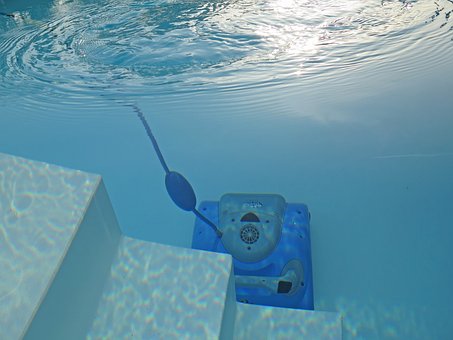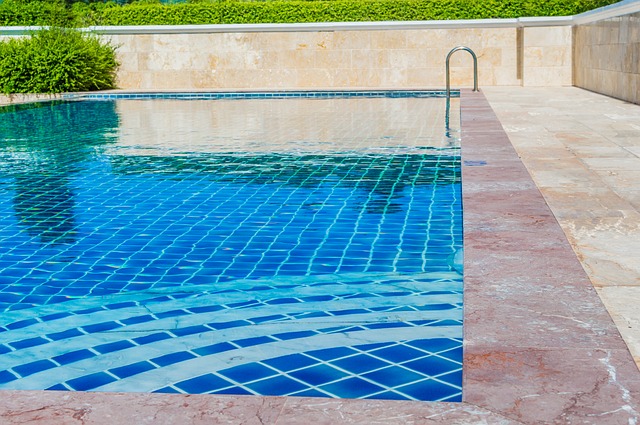
Between the various questions you need to answer (How big is my pool? What temperature do I want it to be? Where will I put my equipment?) and the options available, choosing the right equipment for your pool can seem like a challenge. Don’t worry, it doesn’t have to be.
We’ve put this guide together to help you narrow down your choices and better understand which equipment will be best suited for your pool:
1. Take Into Account the Type and Size of Pool You Have
This is particularly important when it comes to pumps, heaters, and filters. If they’re too small, they’ll struggle to effectively circulate the water in your pool. Ones that are too big will result in excess energy usage, poor performance, and unnecessary wear and tear.
- When it comes to pumps, the number you need to know is the minimum flow rate. To calculate that for your specific pool, use this formula: Total Capacity of Your Pool (Gallons) / Turnover Time / 60. In the majority of cases, your ideal turnover time will be between eight and ten (for an eight- or ten-hour cycle).
- For heaters, BTUs (British thermal units) are what matter. BTUs are the measurable amounts of heat your heater will produce (higher BTUs means more heat; lower BTUs means less heat). To calculate the BTUs needed for gas pool heaters, the formula is: Your Pool’s Area (in Square Feet) X the Temperature Rise (Ideal Water Temperature – Average Temperature in Coldest Month) X 12.
- With filters, you should find one that’s well matched to your pool (the right turnover rate and number of gallons).
Equations for calculating the size of your pool will vary depending on shape:
- Rectangular: Length X Width X Average Depth (Depth at Shallow End + Depth at Deep End / 2) X 7.5 = Total Capacity in Gallons
- Kidney-Shaped: (Longest Width + Shortest Width) X Length X Average Depth (Depth at Shallow End + Depth at Deep End / 2) X 3.38 = Total Capacity in Gallons
- Round: Diameter X Diameter X Average Depth (Depth at Shallow End + Depth at Deep End / 2) X 5.9 = Total Capacity in Gallons
- Oval: Longest Diameter X Shortest Diameter X Average Depth (Depth at Shallow End + Depth at Deep End / 2) X 6.7 = Total Capacity in Gallons
For surface area, it’s a bit more straightforward:
- If your pool is a rectangle measure the length and width, and then multiply them. Keep in mind that if your pool’s shape includes more than one rectangle (an L-shaped pool, for example) you need to calculate the surface area for each rectangle and add them together.
- If your pool is circular, multiply the diameter by the depth, and then multiply that by 3.14 ((Diameter X Depth) X 3.14). Again, remember that you’ll have to make individual calculations for different circular sections (like in a kidney-shaped pool).
Understanding these figures will make it easier to select the equipment that will be best for you.
2. Understand Municipal Requirements Pertaining to Swimming Pools
Governments and municipalities have developed strict rules and regulations surrounding swimming pools and their equipment, including guidelines about where things can be placed in relation to the water’s edge, surrounding buildings, and property lines.
In Canada, for example, gas heaters must be at least ten feet from an opening into a home, at least three feet from a gas meter or air conditioner, and always properly vented when installed in a cabana.
Some other examples from around Southern Ontario include:
- If you’re building a swimming pool in Oakville, any pool equipment and features you want to include need to be in your final submitted plan.
- In Burlington, swimming pool filters must be set back at least 60 centimetres from the rear or side or your property and no equipment is permitted in front yards.
- Mississauga’s regulations stipulate that no part of your outdoor swimming pool – equipment included – is permitted in the front or side yards. Swimming pools also need to be no less than 1.5 metres away from the lot line.
- In Halton Hills, swimming pools can’t be located within property easements and permits are required for any electrical work that needs to be performed (like installing poolside lights or a new piece of equipment).
If you have any questions about additional requirements in your community, discuss them with your local pool service company.
3. Think about the Features You Want in Your Pool Equipment

Consider things like:
- Simplicity: Some pool aficionados will look forward to working with the latest gear. Other pool owners will be looking for something more straightforward that can uncomplicate pool maintenance.
- Energy Efficiency: For most, the pump is the second largest consumer of electricity in the home (being the runner up behind the air conditioner). Choosing the right pump alone (an energy efficient one) can save you upwards of $600 per season!
- Location: Your equipment needs to be easy for you to access. The ideal spot is typically within the fenced area around your pool, though you might be able to place it outside in some cases (depending on your property as well as municipal codes and bylaws in your area). It’s wise to enclose equipment with a gate, as that will help keep it secure.
- Noise: Modern pool equipment has come a long way, but it’s not all sound free. The general rule of thumb is to keep equipment a reasonable distance from poolside lounging spots and windows you like to keep open (like those in bedrooms or living rooms) to minimize disruptions.
Finding the equipment ideally suited to you and your pool will ensure you’re able to enjoy your pool to the fullest all season long.
Total Tech Pools has been your trusted expert on everything pools (equipment, supplies, and service) since 1991. Get in touch with us today to discuss your pool needs!
Check out:
- Kick Off Pool Season: No Price Increase for Pool Opening Services This Year! - April 2, 2024
- Total Tech Pool’s 2024 Pool Liner Solutions: Where Quality Meets Value - April 8, 2024
- Total Tech Pools Oakville Pool Opening Checklist & FAQ - March 1, 2024
